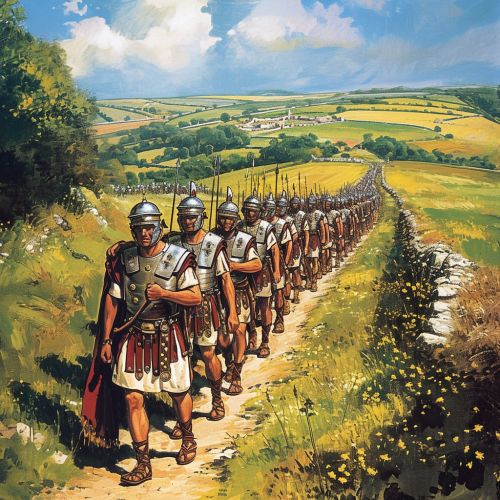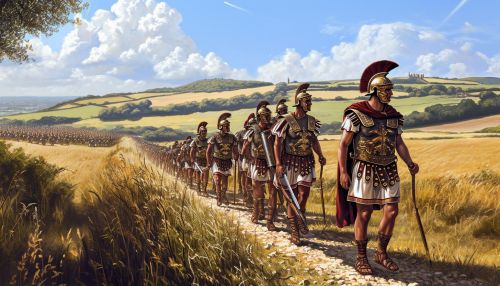Roman Britain
Introduction
Roman Britain, also known as Britannia, was the area of the island of Britain that was governed by the Roman Empire, from 43 to 410 AD. It comprised almost the whole of England and Wales and, for a short period, southern Scotland.
Roman conquest
The Roman conquest of Britain was a gradual process, beginning effectively in AD 43 under Emperor Claudius, whose general Aulus Plautius served as first governor of Roman Britain. The Romans forced their way inland through several battles against Celtic tribes, including the Battle of Medway, the Battle of the Thames, and the Battle of Caer Caradoc.


Roman rule
Roman rule saw significant changes brought to British society, from architecture and infrastructure to culture and religion. The Romans introduced new towns, roads and a new structure of government, which was based on municipalities and provinces.
Architecture and Infrastructure
One of the most visible remnants of the Roman occupation in Britain is the architecture and infrastructure they left behind. This includes the construction of roads, walls, villas, palaces, temples, amphitheatres, baths, and fortifications. The Romans also introduced aqueducts and sewage systems, significantly improving the sanitation and living conditions in urban areas.
Culture and Religion
The Romans brought with them their own culture and religion, which had a profound impact on the native British culture. They introduced the Latin language, Roman law, Roman architecture, and even Roman clothing. The pantheon of Roman gods was also introduced, leading to a syncretism with the native Celtic gods.
End of Roman rule
The end of Roman rule in Britain was the transition from Roman Britain to post-Roman Britain. Roman rule ended in different parts of Britain at different times, and under different circumstances.
